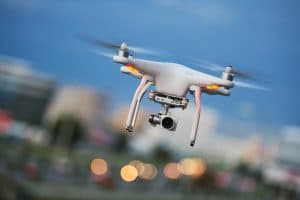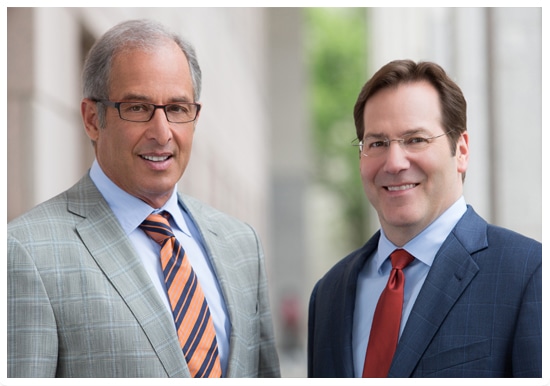Can Drones Help With Accident Reconstruction?
 After a car crash, one of the most important things that will help you with your personal injury case is evidence. Especially when injuries are involved, it can be difficult to remember exactly what happened that led up to the collision. Witnesses and drivers may give conflicting information; and as an injury victim you may have no recollection of the accident at all.
After a car crash, one of the most important things that will help you with your personal injury case is evidence. Especially when injuries are involved, it can be difficult to remember exactly what happened that led up to the collision. Witnesses and drivers may give conflicting information; and as an injury victim you may have no recollection of the accident at all.
This is where accident reconstruction comes in. In the realm of car accidents, accident reconstruction is the process of investigating and analyzing the causes, factors, and circumstances leading to a collision. An accident reconstruction expert often works with attorneys on motor vehicle accident cases to determine fault in a crash.
Although accident reconstruction and evidence collection is traditionally performed at the site of the collision, this takes a great deal of time and can even result in secondary accidents. Recently, accident reconstruction experts have been using drones to speed up and improve the process.
What does an accident reconstruction expert do?
An accident reconstruction expert is a highly trained individual who uses scientific and mathematic methods to determine the circumstances of a car or truck wreck, or motorcycle, bus, bicycle, and pedestrian accidents. Reconstruction experts are typically called on the scene of an accident as soon as possible after it occurs, when the evidence is fresh and undisturbed.
The Expert Institute notes that they will look for things like “tire marks, impact marks, roadway surfaces, metal debris, and airbag control modules (the ‘black boxes’ which sometimes store data on speed and other variables).” A reconstruction expert can use all the information available to them to determine how the accident occurred and, therefore, whether or not a driver was negligent.
For example, an accident reconstruction expert may be able to gather enough evidence to form an accurate opinion regarding a driver’s:
- Speed
- Actions before collision
- Road visibility
- Reaction or lack of reaction
Experienced and skilled accident reconstruction experts can testify on your behalf when you are injured due to the negligence of another driver.
How do drones help with accident reconstruction?
Researchers from Purdue University note that traffic backups caused by accidents are one of the major causes of secondary accidents, stating that “secondary crashes go up by a factor of almost 24 during the time that highway safety officials are assessing and documenting [a] crash site.” In fact, the chances for a secondary crash go up by three percent for every minute the primary accident scene is ongoing.
It can take anywhere from three to eight hours to properly document the evidence from a motor vehicle crash, depending on the severity of the accident. The longer first responders and other personnel are on the scene, the higher the chances they and others will be injured in a secondary accident.
Investigators and accident reconstruction experts traditionally use things like tape measures, pencil and paper, and cameras to recreate the scene of an accident, visually identifying skid marks and accident debris. This takes time and can cause massive roadway delays.
However, drone technology can cut down on this time, making evidence collection both more efficient and safer. A drone, according to Purdue, can map an accident scene in five to eight minutes. It does so by recording visuals of the scene that are later mapped into three-dimensional models or maps.
Says Ayman Habib, Purdue’s Thomas A. Page Professor of Civil Engineering, “Our procedure for data collection using a drone can map a scene in five to eight minutes, allowing public safety officers to open the roads much quicker after an accident.”
In fact, the technology is already successfully in use. The Sheriff’s Office in Tippecanoe County, IN used drones to map out crash scenes 20 times in 2018, and found they cut 60 percent off the traffic backup time following an accident. They posted a video about their findings with more details.
Captain Robert Hainje of the Tippecanoe County Sheriff’s Office noted, “The collaboration with Purdue faculty and students has been tremendously effective in helping our law enforcement, first responders and special teams. The drone technology with the thermal imaging capability helps with all types of emergencies such as search and rescue, aerial support over water for diver teams or in wooded areas and for fugitive apprehension.”
How to stay safe after a car crash
Staying calm and collected after a car accident can help ensure your safety and the safety of your passengers, reducing the possibility of further injury. The experts at AAA Roadside Assistance recommend taking the following steps after a motor vehicle crash:
- Assist any injured victims and ensure you are not in imminent danger.
- Get to a safe place. If your vehicle is drivable, move it to the emergency lane and turn on your hazard lights and/or set out flares or reflective triangles. Do not leave the scene but wait in a safe place.
- Notify the police or 911.
- Document the details of the accident and exchange information.
- Notify your insurance company about the accident.
You should also seek medical attention as soon as possible after the crash, even if you feel you don’t have any serious injuries. Some internal or head injuries may not symptomize right away. Then, contact an experienced Charlotte personal injury attorney to discuss your options.
At Warren & Kallianos, PLLC, we represent the rights of car crash injury victims. We hold negligent drivers accountable for their actions and work to ensure you are fully compensated for your injuries and losses. We are here to help. Call us in Charlotte at 704-377-7777, or schedule an appointment by filling out our contact form.

At Warren & Kallianos, we believe in the importance of working directly with our attorneys, Jeff Warren and Chris Kallianos. When you work with our firm, Jeff and Chris are always accessible to you throughout the progress of your case.
Read more about Warren & Kallianos, PLLC
